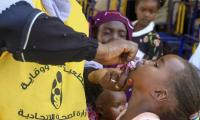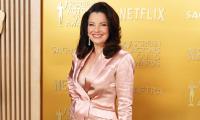LAHORE: The parity of the Pakistani rupee versus the American dollar has worsened more than 4,100 percent from just Rs4.76 exactly 50 years ago, on May 1972, to a whopping Rs200 on May 18, 2022, hence compounding country’s economic miseries, research and calculations showed.
On the contrary, in neighboring India, the country’s rupee deteriorated 898.59 percent during the last half a century under review from Indian Rs7.59 in May 1972 to Indian Rs77.59 on May 18, 2022.
Exchange rate is one of the most vital pillars of any nation’s macro-economic stability, but the way the unharnessed American greenback has battered the Pakistani rupee is unprecedented and the situation now is nightmarish for country's external debt, import bill and the fiscal deficit.
The rupee has been shedding weight and value like autumnal leaves against the American currency since the May 28, 1998 nuclear tests at least when forex accounts were frozen at home (at Rs46/dollar) and country had to encounter international sanctions of all sorts.
Unchecked flight and hoarding of the dollar then made economic strategies subservient to monetary and exchange rate policies. Money tightening regimes came forth, leading to surging inflation, soaring public debt and uncontrollable and unbridled debt-servicing costs till date.
Since former premier Imran Khan was ousted on April 10, 2022, the rupee-dollar parity has degenerated by Rs13.72 or 7.37 per cent from Rs186.28 to Rs200 in just 38 days.
During the 1,333-day rule of the previous Pakistan Tehreek-e-Insaaf (PTI) government, which had formally assumed charge on August 18, 2018 when Imran Khan was sworn in as country’s 22nd Prime Minister, the parity of the Pakistani rupee versus the American dollar has degraded by 50.23 percent from Rs124 to Rs186.28.
A retrospective insight into Pakistan’s exchange rate regimes and their impact on the economy by the Institute of Business Administration (IBA) Karachi revealed, “After independence in 1947 Pakistan adopted a fixed exchange rate regime.
The rupee was linked to the sterling and in 1949 the sterling was devalued followed by the subsequent devaluation of the Indian rupee.”
“The Pakistani government also faced pressure to devalue the currency but it stood up to the pressure and did not devalue the Pakistani rupee as the export earnings were rather limited and devaluation would make the imports of machinery and capital equipment required for the newly industrialising economy more expensive.”
In August 1955 however, Pakistan had to devalue its currency subsequent to the Korean War boom as the country fell into a recession along with other world economies and faced a severe shortage of foreign exchange. As the influence of the US economy increased in the worldly economic matters Pakistan switched its peg from sterling to the dollar on September 17, 1971,” it added.
The research paper added In February 1973, the dollar was devalued by 10 percent which led to subsequent revaluation of Pakistani rupee by 10 percent to Rs9.90 per dollar and it remained fixed at this level until the decision to adopt the managed float in 1982.
During the fixed exchange rate regime from 1973-1982, actual real effective exchange rate moved in tandem with the price differential and the movement of the dollar and other major currencies.
The rupee regained competitiveness in real terms during 1976-1979 because of the continued lower inflation differential and the dollar's depreciation vis a vis some other major currencies.
During early 1980s, real effective exchange rate appreciated substantially due to appreciation of the dollar against major currencies and higher domestic inflation as compared to trading partners, the report stated.
Honda officials posing for a photgraph. —APP/FileKARACHI: Honda Atlas Cars Pakistan Ltd has achieved a major...
SOS children village's children showing bags donated by Emirates International Airlines. — Emirates...
Automobiles at the shipping terminal are shown from the view of a drone in San Diego, California, US, March 26, 2025....
A representational photo of clash between police and protesters. —AFP/FileLAHORE: Pakistan’s governance crisis has...
A woman holds a smartphone displaying the logo of social network X . — AFP/FileElon Musk said his xAI artificial...
A representational image of a person using his cellphone for a digital transaction. — Unsplash/FileKARACHI: Chief...







